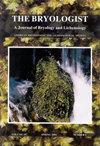Lichen substances are more important for photoprotection in sun than shade collections of lichens from the same species
IF 1.5
4区 生物学
Q4 PLANT SCIENCES
引用次数: 0
Abstract
Abstract. Photosynthetic organisms possess a great diversity of mechanisms to protect themselves from the potentially stressful effects of high PAR (photosynthetically active radiation). A distinctive response to longer term exposure to high levels of PAR in lichens is the synthesis of a variety of substances in the upper cortex that can protect photobionts from photoinhibition. In the present study, lichen substances were removed harmlessly from lichens using the “acetone rinsing” method. This enabled us to compare the importance of the substances in photoprotection in sun and shade collections of four species of Afromontane lichens. While all species normally grow in more exposed microhabitats, it is easy to make collections of more shaded thalli. Using chlorophyll fluorescence, we show that collections of lichens from sunny microhabitats have higher tolerance to photoinhibition than those from shaded locations. Furthermore, removal of lichen substances increases sensitivity to photoinhibition, suggesting that even although colorless, they have a role in protecting against high PAR. Sensitivity was increased much more in sun than shade collections, implying that substances play a greater role in photoprotection in lichens from sunny microhabitats. Nevertheless, following the removal of lichen substances, most sun collections still possess higher tolerance to photoinhibition than shade collections. Therefore, the additional tolerance of sun collections appears derive from a combination of both lichen substances and other, probably more biochemical tolerance mechanisms.地衣物质在阳光下的光保护作用比同类地衣的遮荫作用更重要
摘要光合生物具有多种机制来保护自己免受高标准杆数(光合活性辐射)的潜在压力影响。地衣对长期暴露于高水平标准杆数的独特反应是在上部皮层合成多种物质,这些物质可以保护光生物免受光抑制。在本研究中,使用“丙酮漂洗”方法对地衣中的地衣物质进行了无害去除。这使我们能够比较四种非洲地衣在阳光和阴影下收集的光保护物质的重要性。虽然所有物种通常都生长在更暴露的微栖息地,但很容易收集到更隐蔽的铊。利用叶绿素荧光,我们发现,来自阳光充足的微生境的地衣比来自阴凉处的地衣对光抑制的耐受性更高。此外,地衣物质的去除增加了对光抑制的敏感性,这表明即使无色,它们也能对高标准杆数起到保护作用。阳光下的敏感性比阴影下的敏感性增加得多,这意味着这些物质在来自阳光微生境的地衣中发挥更大的光保护作用。尽管如此,在去除地衣物质后,大多数阳光采集仍然比阴影采集具有更高的光抑制耐受性。因此,太阳集合的额外耐受性似乎源于地衣物质和其他可能更具生物化学耐受性的机制的结合。
本文章由计算机程序翻译,如有差异,请以英文原文为准。
求助全文
约1分钟内获得全文
求助全文
来源期刊

Bryologist
生物-植物科学
CiteScore
2.40
自引率
11.10%
发文量
40
审稿时长
>12 weeks
期刊介绍:
The Bryologist is an international journal devoted to all aspects of bryology and lichenology, and we welcome reviews, research papers and short communications from all members of American Bryological and Lichenological Society (ABLS). We also publish lists of current literature, book reviews and news items about members and event. All back issues of the journal are maintained electronically. The first issue of The Bryologist was published in 1898, with the formation of the Society.
Author instructions are available from the journal website and the manuscript submission site, each of which is listed at the ABLS.org website.
All submissions to the journal are subject to at least two peer reviews, and both the reviews and the identities of reviewers are treated confidentially. Reviewers are asked to acknowledge possible conflicts of interest and to provide strictly objective assessments of the suitability and scholarly merit of the submissions under review.
 求助内容:
求助内容: 应助结果提醒方式:
应助结果提醒方式:


